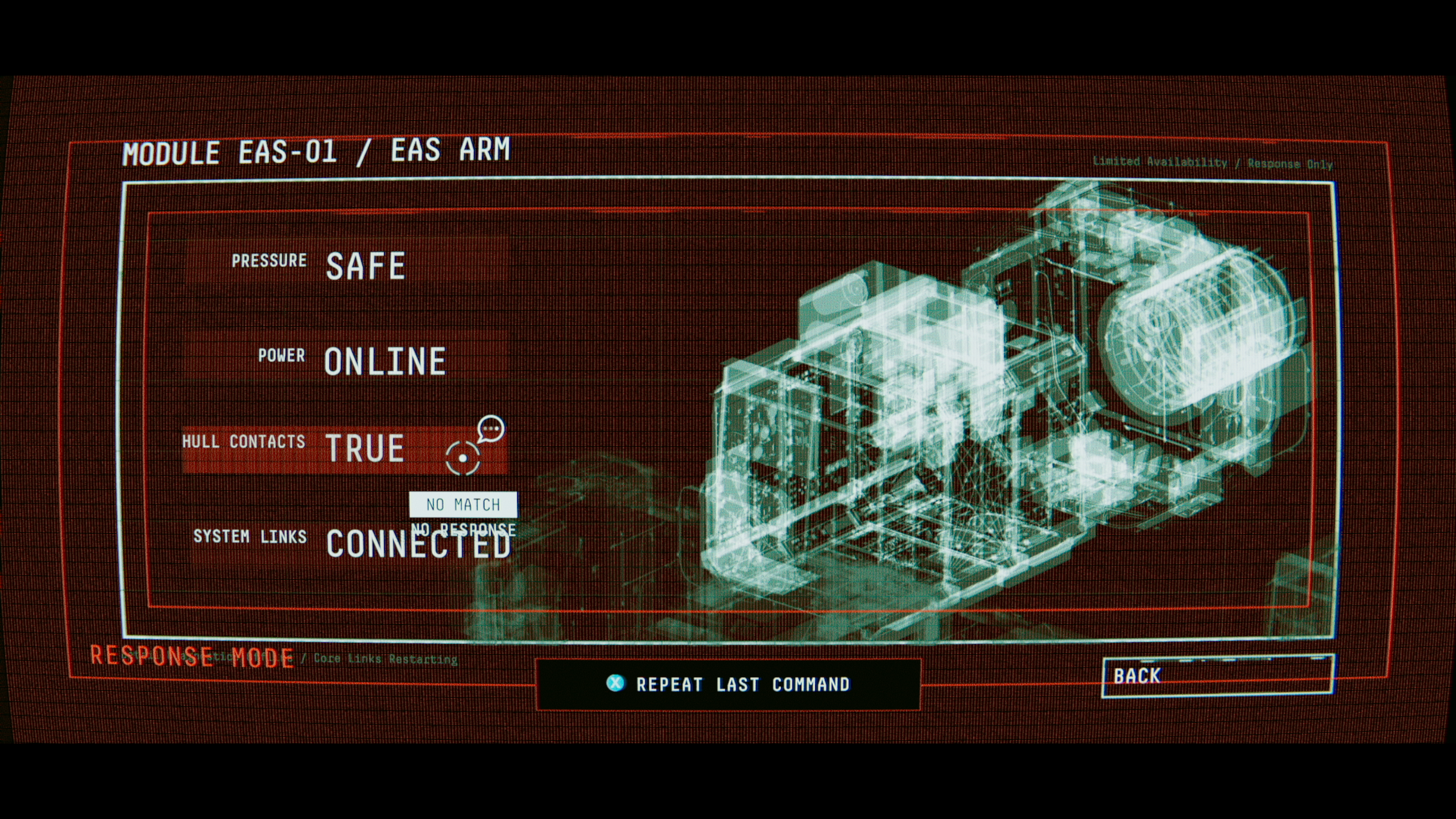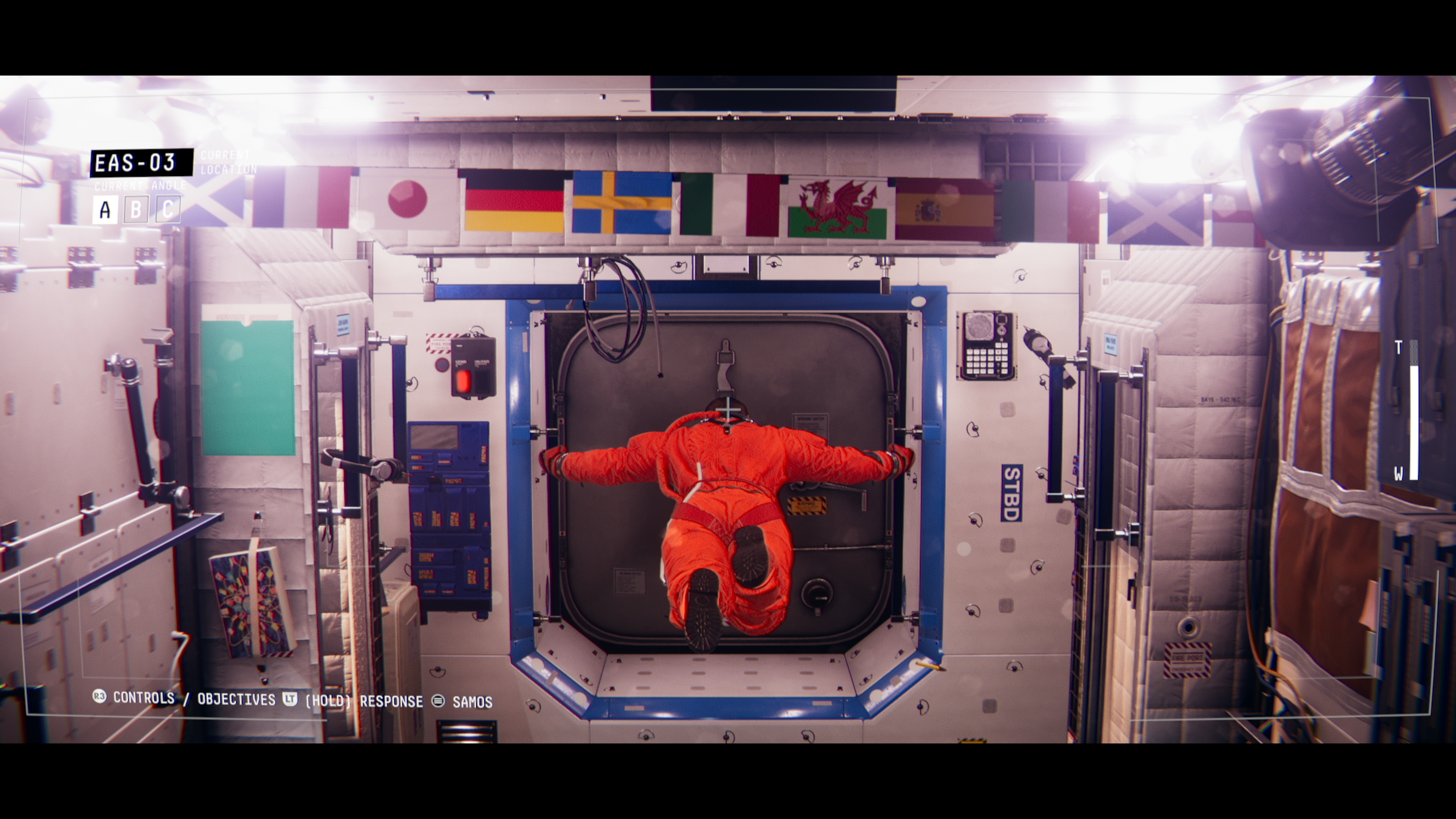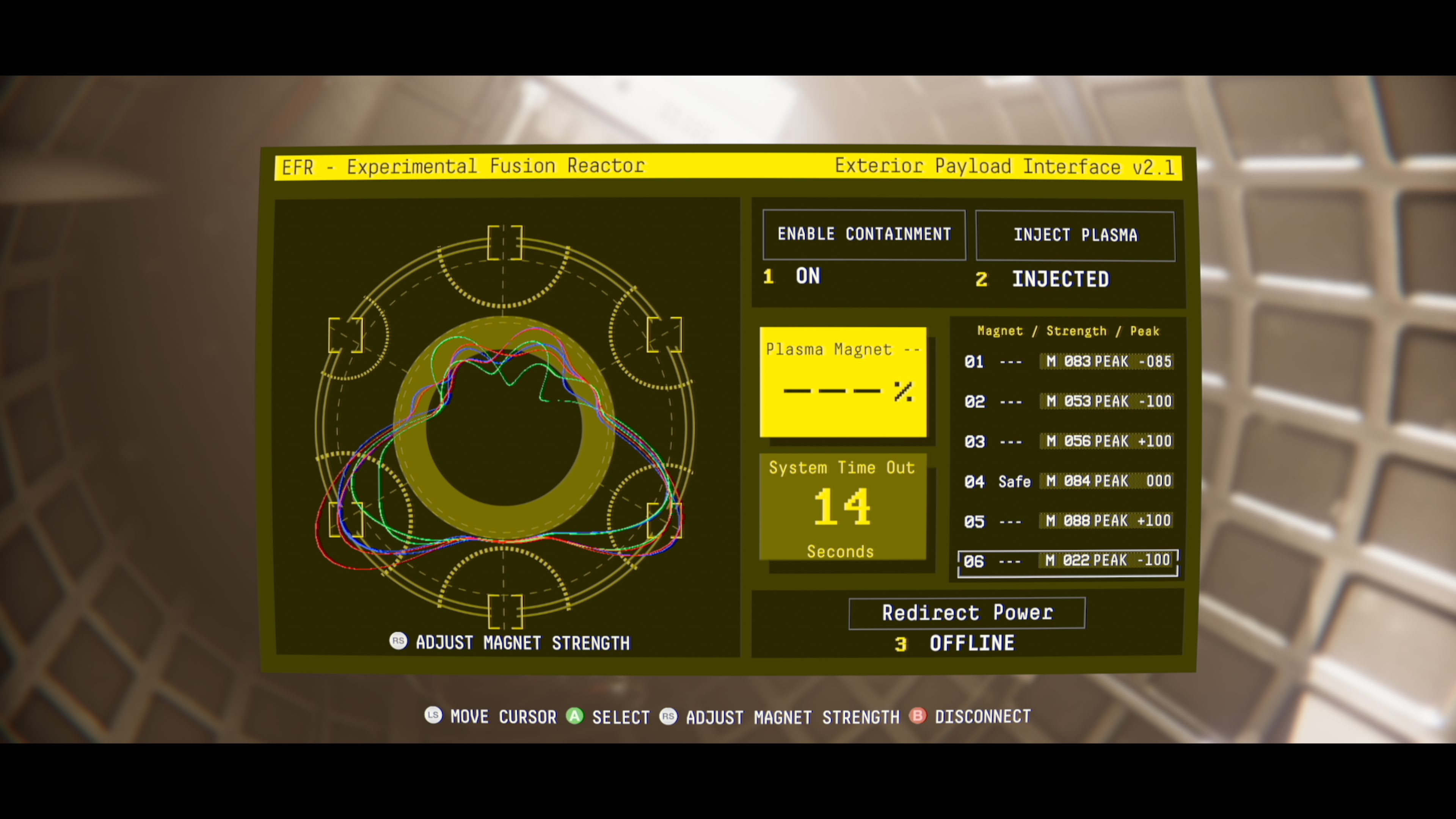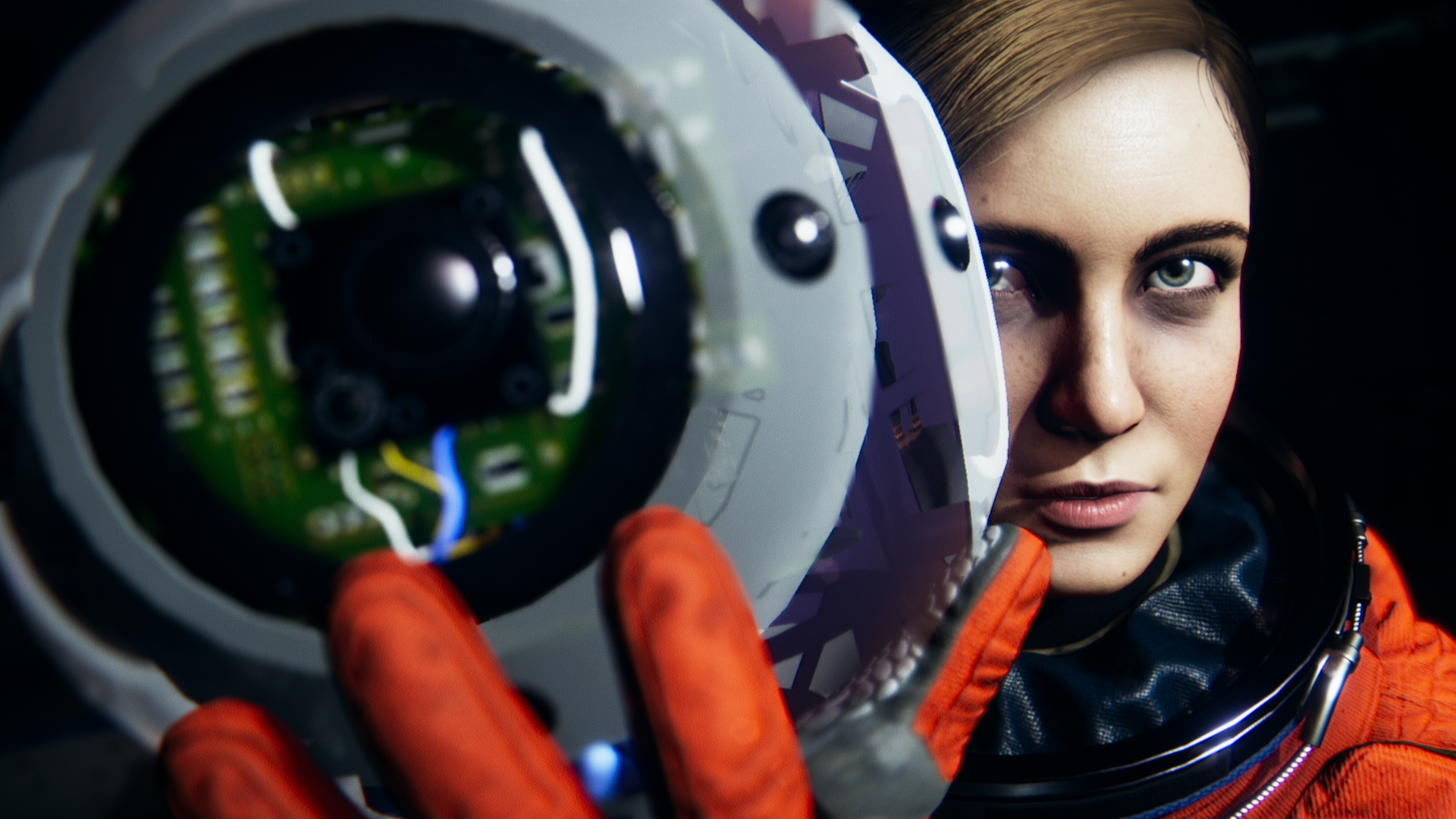Our Verdict
A stylish, understated, and subtly chilling psychological thriller with a compelling mystery at its core.
PC Gamer's got your back
What is it? A sci-fi thriller set aboard a damaged space station.
Expect to pay £20/$25
Developer No Code
Publisher Devolver Digital
Reviewed on GTX 1080, Intel i5-6600K, 16GB RAM
Multiplayer None
Link Official Site
Buy it Epic Store
The space station Observation has broken away from its Earth orbit and is drifting somewhere near Saturn. Its systems are malfunctioning, a fire has broken out, and the on-board artificial intelligence, SAM, is acting strangely. Things are not looking good for Dr. Emma Fisher, the reluctant, resourceful hero of this sci-fi thriller from the studio behind Stories Untold.
But what's interesting about Observation is that you don't play as Fisher. Instead, you play as SAM, her AI helper. The station is an extension of you, and its cameras are your eyes and ears. You can, when asked, open doors, cycle airlocks, assess damage, and all manner of functional duties. But something seems to have awoken in you. A flicker of self-awareness, perhaps. And an ominous command from an unknown party has infiltrated your programming: BRING HER.
The Observation is reminiscent of the real-world International Space Station: a strangely low-tech warren of claustrophobic corridors with no up or down, littered with laptops, science equipment, vacuum-sealed space food, and the personal effects of the crew. Who, by the way, are also missing. There's a powerful sense throughout that, until very recently, this place was bustling with life. People performing science experiments, socialising, watching the Earth looming below. Fisher is alone, but as she floats through the station in zero gravity there are echoes of the vanished crew all around her.

Fisher is justifiably distressed by the discovery that she has somehow, inexplicably, ended up almost 900 million miles from where she's supposed to be. But she's also a trained astronaut and immediately sets to work repairing the stricken station—with your help. At any time you can pull up a schematic of the Observation and jump between stationary cameras, panning and zooming and scanning for objects of interest. The game is largely silent except for the ambient rumble of the station and the whirring and clicking of these cameras, which is enormously atmospheric and quietly unnerving.
You can pull up a schematic of the Observation and jump between stationary cameras
Observation also makes subtle use of video effects, with simulated interference, grain, and distortion giving the image a tactile, analogue quality. This along with the grounded realism of the station, as well as some beautifully natural lighting, makes for a remarkable looking videogame. It also reinforces the idea that you're playing as a machine, viewing your small world through the curve of a lens, and that the technology wired through the wounded station is as fallible as anything else. This feeling of being at the mercy of technology, with only a thin layer of aluminium between you and an endless cosmic void, adds an undercurrent of tension.
When you've located something Fisher is looking for with one of your cameras—a damaged module, say, or the source of a fire—you can respond to her request. SAM will answer in the kind of calm, reassuring, but also slightly unsettling voice so beloved by sci-fi AI. She will also ask you to unlock jammed doors, recover data from laptops, and reboot systems, including re-establishing communications with Earth and activating a tracker to find the lost crew.

SAM isn't always confined to the Observation's network of cameras. In some parts of the game you can possess guidance spheres: little orb-shaped drones that allow you to fly freely around the station, interacting with things the same way you can with the cameras. Flying takes a bit of getting used to, particularly when it comes to orienting yourself in a place where up and down is an outdated concept. But the spheres are the best way to explore the station, poking around for hidden documents and audio logs that will help fill in some of the blanks of the game's enigmatic story. But more on that later.
More than once I found myself reaching for a pen and paper
The Observation is a place worth exploring. The station is made up of four sections: Salyut 10, the Russian arm; Horizon, the European and American arm; Shenzhou XII, the Chinese arm; and Universal, a central hub shared by the entire crew. Each section of the station has its own distinctive aesthetic, atmosphere, and personality, reflecting both the nations who built them and the people who live and work there. The station is extremely detailed, from the intricately designed computers and machines that keep it running, down to pens and rolls of tape tethered to people's workspaces.
Finding a problem is one thing, but to fix something that's broken—such as the experimental fusion reactor powering the station—you often have to dive in and get your circuits dirty. The station is governed by a series of arcane, complex computer systems that are beyond even Fisher's considerable talents, leaving SAM to make sense of them. Here the puzzle-solving aspect of the game fully emerges as you attempt to untangle these systems, and more than once I found myself reaching for a pen and paper. It was a little jarring, I must admit, playing as a super-intelligent, self-aware computer, but still having to use a notepad to make up for the limitations of my stupid organic brain.

Each puzzle is represented by a wonderfully stylised interface, with the kind of hard, functional design you'd expect from something that was only ever meant to be accessed by a machine. It's no coincidence that the game was directed by the person responsible for Alien: Isolation's similarly utilitarian AI. Tasks include adjusting a magnetic field in the aforementioned fusion reactor, running diagnostics on your own damaged memory core, fixing the clamps that hold the station together, and rebooting a faulty cooling system. And all of these jobs have their own unique interface and means of interaction, rooted in smart, well-designed puzzles that are immensely satisfying to solve.
Each puzzle is represented by a wonderfully stylised interface
Many of them involve referencing schematics or diagrams which are usually found pinned to walls or hidden on laptops. Other solutions I uncovered more instinctively, prodding at a particular system's sliders, buttons, and other sci-fi doohickeys until it started to make sense. The sheer variety of puzzles in Observation is impressive—both in terms of how you interact with them and their visual design. As a puzzle game it offers a fairly stiff challenge, but nothing that will truly stump you.
The only real struggle I had was getting lost in the labyrinthine, maze-like tunnels of the station while controlling the spheres—at least until I discovered a waypoint system that, when you choose a module on the map, leads you right there. I also noticed while floating around in an aimless daze that the game, correctly guessing I was lost, automatically set a waypoint for me. In general, however, Observation leaves you to your own devices, rarely revealing much about where to go next or how to solve a particular problem. You can ask Fisher to repeat her last command, but a lot of the time this acts more like a cryptic clue or a subtle hint than an explicit instruction.

Observation's other great strength is its story and how it tells it. The influence of 2001: A Space Odyssey is obvious, but not in the way I expected. SAM's rebellion and flutters of self-awareness are not as sinister or immediately obvious as HAL's. Instead, it's in the restraint of the narrative where I felt the strongest echoes of Kubrick's austere sci-fi epic. Observation's plot is incredibly compelling, with a fascinating, mind-bending sense of mystery that kept me hooked from beginning to end. But it never spells anything out for you, encouraging you to think and observe as the story slowly unfolds.
You can fatten your understanding of the plot up with those optional audio logs and documents, but even then a lot is left to your imagination. My only gripe is that I never really felt like SAM was experiencing any kind of moral conflict, or that he was battling the mysterious forces invading his programming. In fact, he's not much of a character at all, which I found a little disappointing. Fisher is the heart and soul of the game, really, and I felt more connected to her overall. But the important thing is that, long after I finished Observation, I was still thinking about it: the mark, for me, of any great sci-fi story.
I was relieved to discover that Observation wasn't just another horror game set in space. It has the measured pacing, knife-edge tension, and twisting narrative of a great thriller. It's scary, but only under the surface, quietly eating away at your nerves rather than shocking them. And it's the best kind of science fiction: exciting and entertaining, but also making you think about humanity's place in the cosmos and, perhaps, the deeper mysteries of universe.

A stylish, understated, and subtly chilling psychological thriller with a compelling mystery at its core.
If it’s set in space, Andy will probably write about it. He loves sci-fi, adventure games, taking screenshots, Twin Peaks, weird sims, Alien: Isolation, and anything with a good story.



